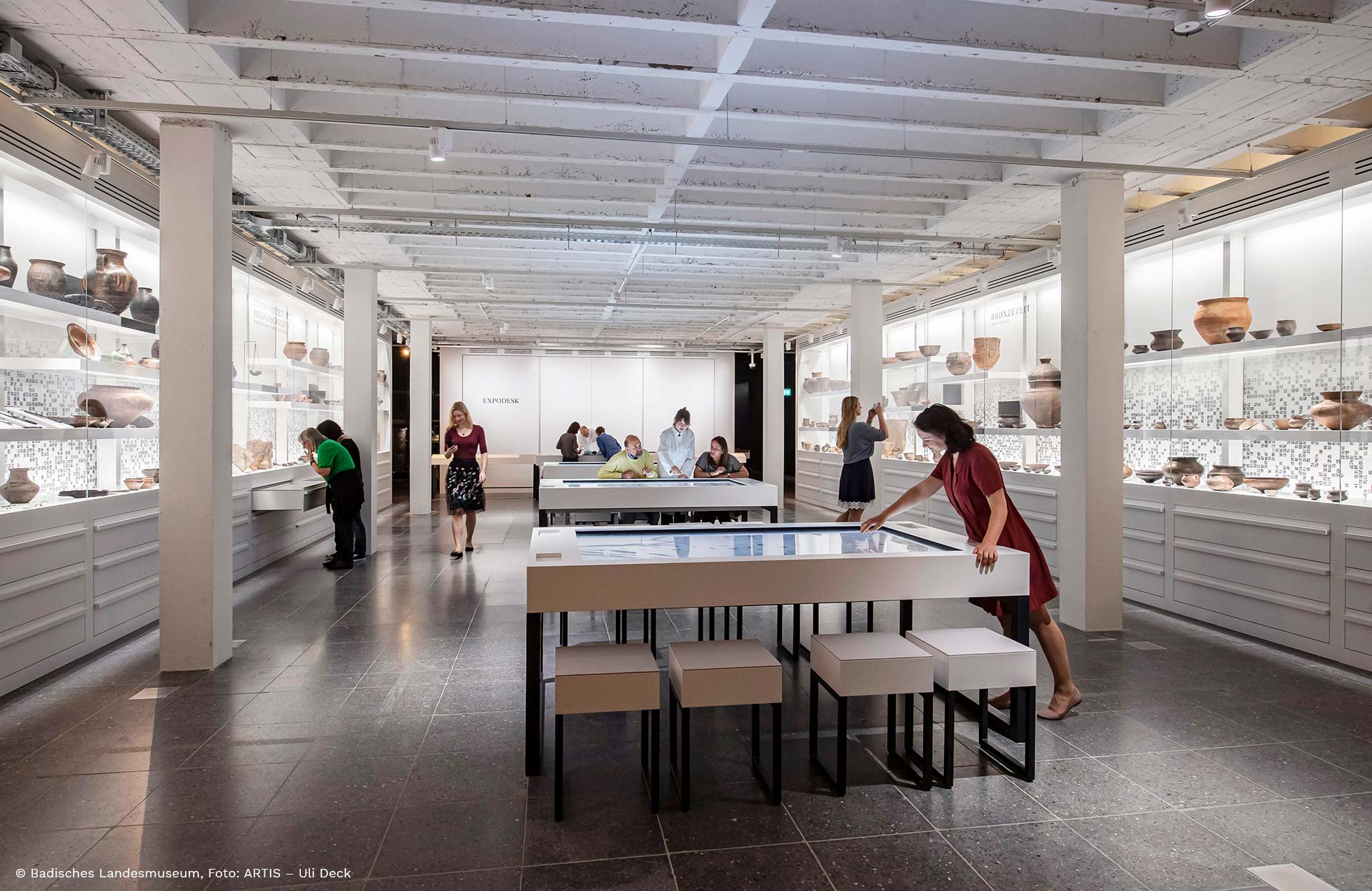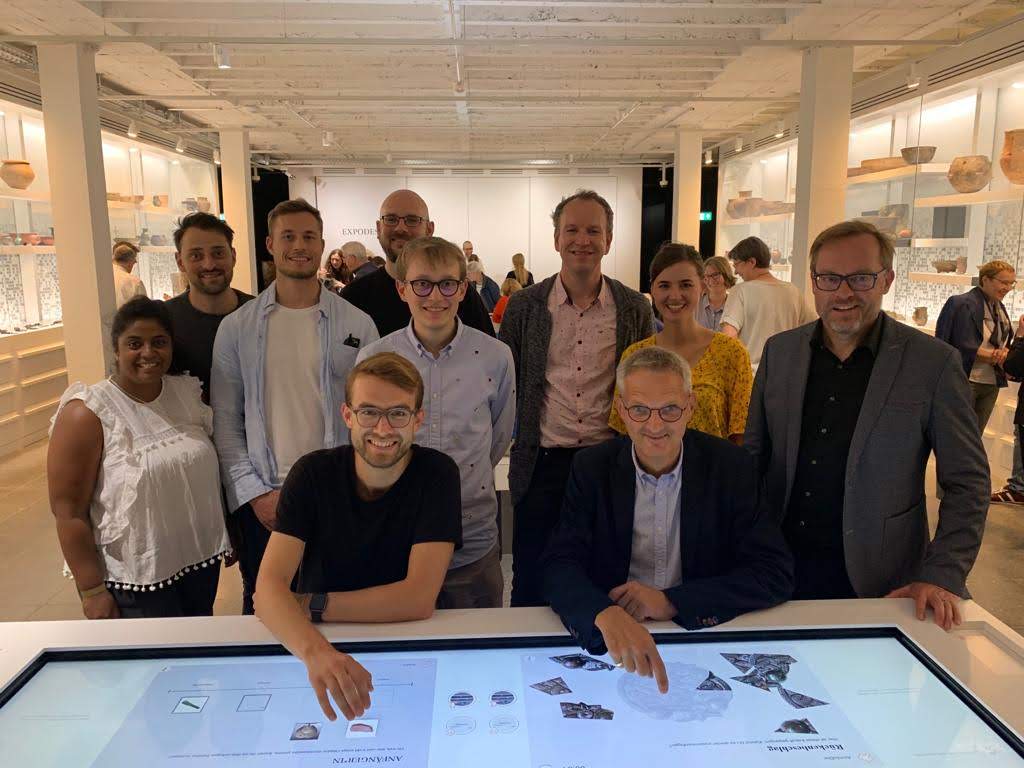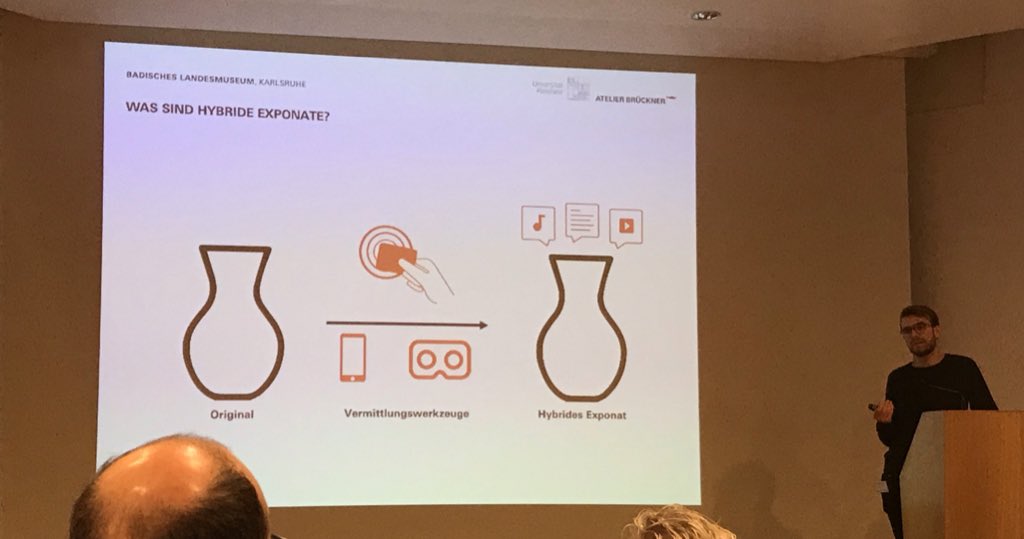Interaction Design That Transforms Visitors To Users Of The Baden State Museum Karlsruhe
Client
- Baden State Museum Karlsruhe
Team
- 4 Architects
- 1 Designer
- 3 Computer Scientists
Year
- 2017 – 2019
Tasks
- Design
- Implementation
- Publication

How can we integrate the visitors as part of the museum?
The exhibition Archaeology in Baden at the Baden State Museum Karlsruhe is the first exhibition to follow the museum’s new overall concept: Museum visitors become active users who explore the museum’s collection based on what they are actually interested in using interactive, novel technologies. In the exhibition, the exhibits are initially presented without any further information. The focus is entirely on the aura of the original: A drastic change to the traditional exhibit signs. The visitors can decide themselves whether they want further information and receive it on demand – through the use of a wide variety of technologies. Sometimes almost conventionally via displays mounted above the objects, sometimes using novel, interactive technologies such as AR and VR. Several scientists – called Explainers – are always present to provide further information up close and personal. They even present original objects that visitors can then touch, look at and examine.
”A museum revolution in Baden.
Prof. Dr. Eckart KöhneDirector, Baden State Museum Karlsruhe
”The exhibition is a unique experience that should not be missed.
Kultur in Karlsruhe
Results
We designed the exhibition „Archaeology in Baden“ in an interdisciplinary team of Architecture, Communication Design, and Computer Science students of the University of Konstanz and HTWG Konstanz. I was part of a team of three computer scientists and one designer that created the overall interaction concept for the exhibition as well as for each individual installation. For me, it was an exciting opportunity to work on a permanent exhibition in a renowned German museum. Moreover, for the realization of the exhibition, we collaborated with Atelier Brückner, one of the world’s leading exhibition design companies, which executed our ideas and designs in amazing quality.
The Exhibition
Unfortunately, I can not show you photos from the exhibition, as I do not hold the rights to the photos. If you want to see the exhibition, please have a look at the website of Atelier Brückner or of Mediale Ausstellungsgestaltung. There, you’ll also find more information about the exhibition.
Publication
I was able to publish and present a paper describing the exhibition at EVA Berlin 2018. In this paper, I introduce our concept of Hybrid Exhibits, which aims to combine the use of real and virtual information without affecting the aura of the original exhibit. Using the example of the exhibition „Archaeology in Baden“, I showed how hybrid exhibits can be used in exhibitions and how new interactive media can be used to contextualize such exhibits.
Process
As it was a commercial project, I cannot reveal too much about our design process or show images from it. However, I can describe our core steps:
After the Baden State Museum had chosen the winning exhibition design, it asked our HCI workgroup to finalize the interaction design for it. We were a team of one designer and three computer scientists (including me). At this point, the interaction design was still quite sketchy – it was clear what technologies were going to be used and for what purpose, for example, that visitors should be able to scan exhibits using AR smartphones. Consequently, the task was multi-faceted: We had to create a consistent design system for all interactive elements in the exhibition, design their UI, and further specify how the various exhibits should be implemented to hand off the concept to a programming company. The result was 128 pages-long report that detailed the design and usage of every exhibit, including their technical requirements and functioning, enabling the programming company to immediately start developing.
After the company was finished developing it, we evaluated the exhibition using a heuristic evaluation.
Used Tools
Hardware
Smartphones, Tabletop, HTC Vive
Software
Sketch, Photoshop, Processing
Languages
Processing/Java
Publications
- Skowronski, M., Herzog, K., Wieland, J., Fink, D., Klinkhammer, D., Reiterer, H., Schlag, E., Köhne, E., Dresch, J., Konstandin, S. & Schulenberg, S. (2018). Hybride Exponate und deren Kontextualisierung im BLM Karlsruhe. In Konferenzband EVA Berlin 2018: Elektronische Medien & Kunst, Kultur und Historie. Staatliche Museen zu Berlin, Berlin, 177-187. ISBN 978-3-88609-817-0

